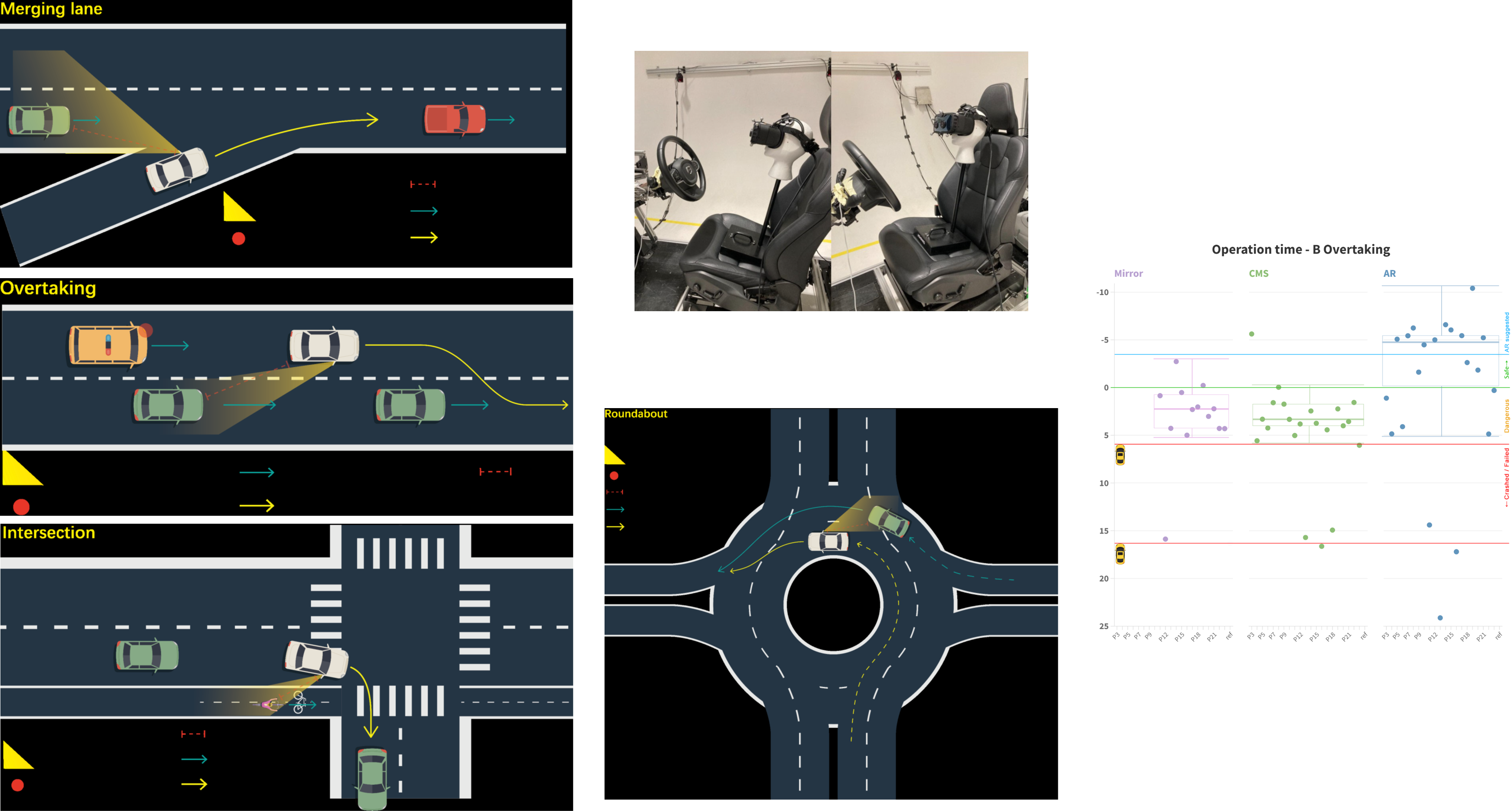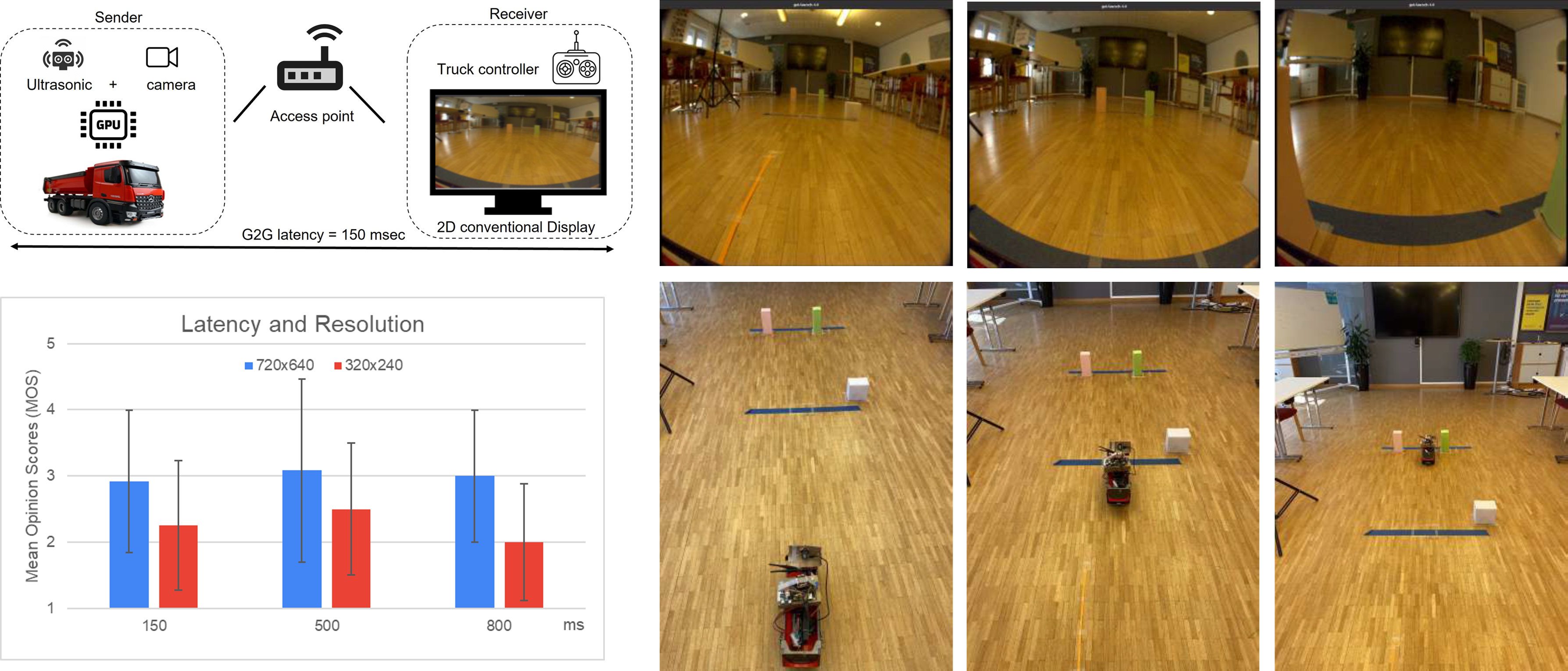
Recently, the traditional rear and side view mirrors have been started to be exchanged with a digital version. The aim of this study was to investigate the difference in driving performance between traditional rear-view mirrors and digital rear view mirrors which is called Camera Monitor System (CMS) in the vehicle industry. Here, two different types were investigated: CMS without or with Augmented Reality (AR) Information. The user test was conducted in a virtual environment, with four driving scenarios defined for testing. The user test results revealed that the participants driving performance using CMS (only cameras and 2D displays without augmented information) did not improve over traditional mirrors.

In this study, we designed an experiment using remote-controlled lab based moving platform to evaluate the impact of resolution, latency, and field of view on the Quality of Experience, performance, user experience and depth perception. The experiment involves two tasks: driving the platform to a stop point and parking it between two boxes. Participants provided feedback through questionnaires, and their experiences were analyzed. Seven participants between 30 and 57 (average of 37) years old participated. We used Google Forms for data collection, including pre-experiment and recurring questionnaires as well as a simulator sickness questionnaire. Despite the low number of test participants leading to uncertainty in quantitative analysis, significant effects were observed, albeit with contradictory statistical outcomes. The data suggests that lower latency corresponds to better performance, with participants not always perceiving higher latency accurately. Video quality notably impacts user experience, with higher resolution being preferred.